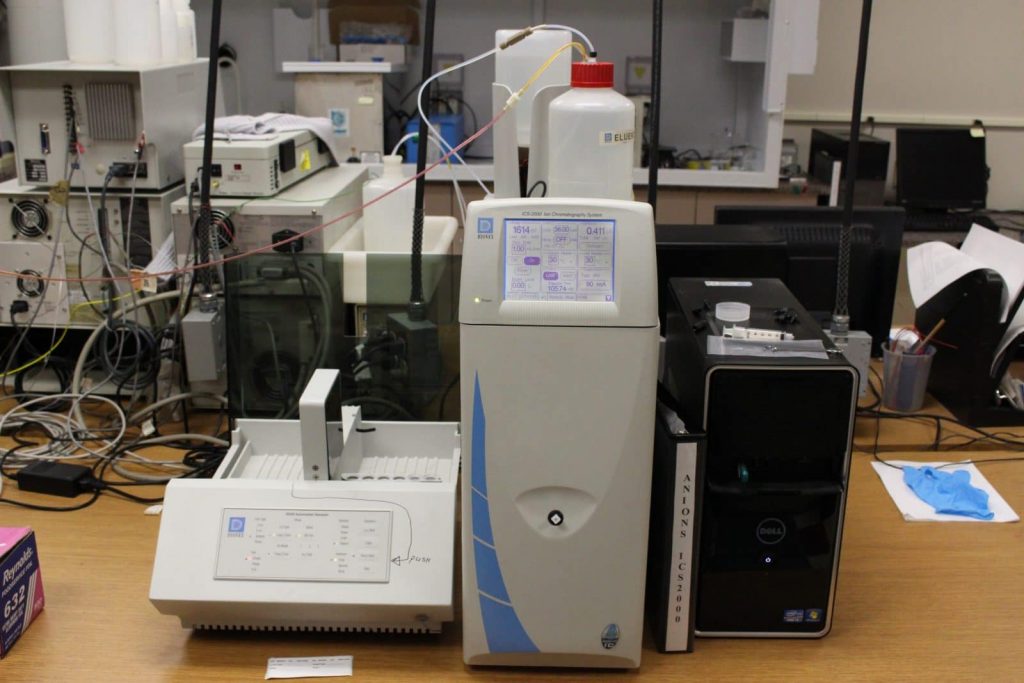Chromatography is a term which May refer to any number of different techniques of separating the different elements of analytes for preparative or analytical software. While the particulars of each of type of chromatographic process change, basically what happens is this: an analyte or mixture containing an analyte is combined with a solvent to form a liquid or gas or supercritical fluid in certain cases called the mobile phase. The mobile phase is then passed through a moderate fixed set up called, understandably enough, the stationary phase; this substance is often silica, but varies depending on the type of chromatography being done. The differing physical or chemical Properties of the constituent elements of the mobile phase led them to pass through the stationary phase at various rates; a procedure which divides the analyte in the other elements of the mobile phase.

These different partition coefficients, because they are known, are the foundation for chromatographic preparation and analysis in the lab. Basically, the less affinity that the specified part in the mobile phase has for the fabric of the stationary phase, the more quickly it will pass through the column. It is somewhat more complex than all that, of course, but this is the general principle behind chromatography. In preparative chromatographic Applications, the point is to separate the elements of the cell phase, which are then often put to use elsewhere in the lab. It may be an efficient purification procedure with certain materials and might be completed in nearly any amount as needed. Analytical programs, on the other hand, are often performed with much smaller quantities of material, together with the chromatograph used to present a measurement of the concentration of elements of the sample being analysed.
This method may also be used to figure out if a given analyte is actually present in a sample in any respect. While their intentions might differ, preparative and analytical chromatography may actually be carried out in one operation. The most familiar hplc testing to most people is the columnar procedure, though newspaper which depends upon the different rates at which substances bond with a sheet of cellulose, planar and thin coating which often use a sheet of glass as a substrate underneath a layer of silica or cellulose chromatographic methods are also common. There are actually many different methods available, with some being better suited to certain applications or various analytes. The condition and type of analyte to be tested for and the use of the separation largely determine whether gas or liquid chromatography and which type is suitable.